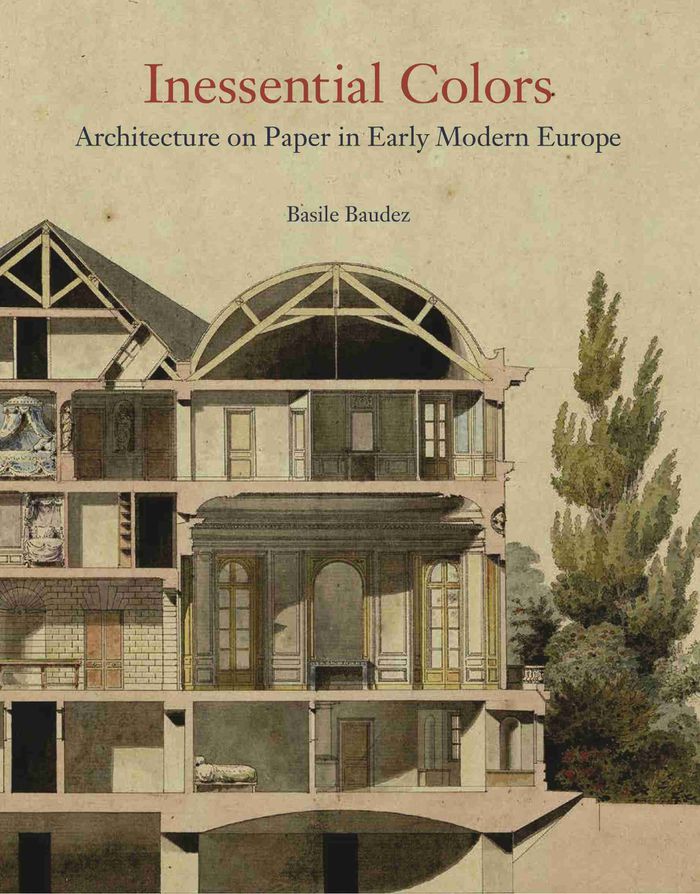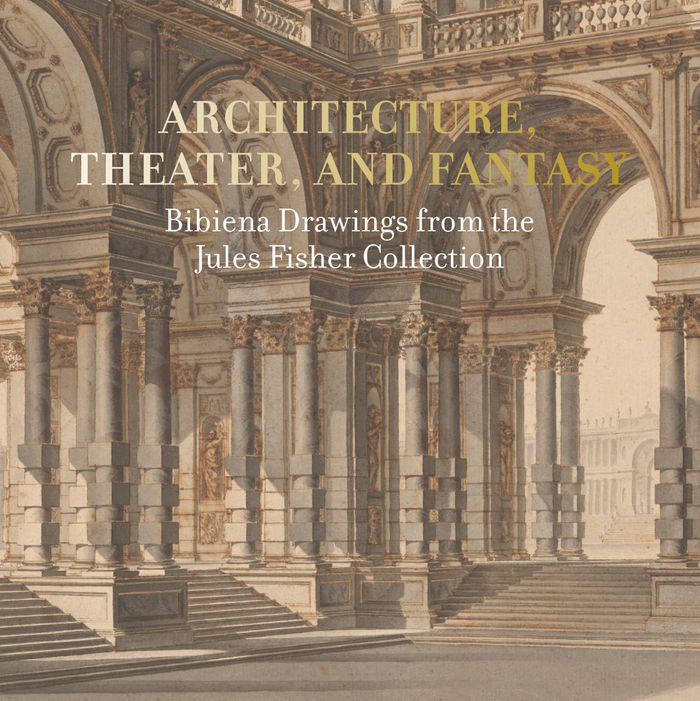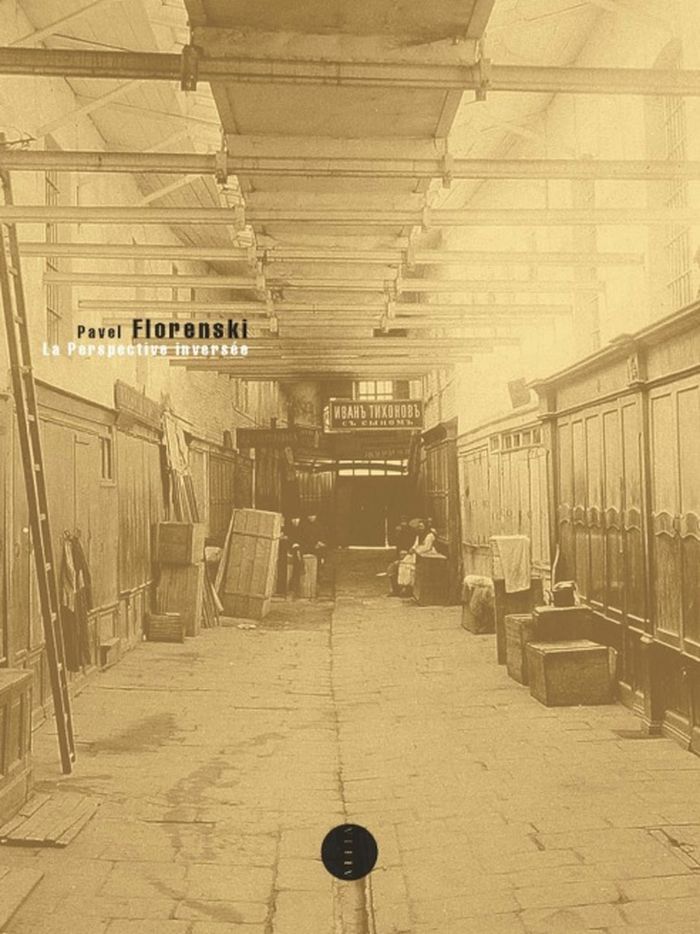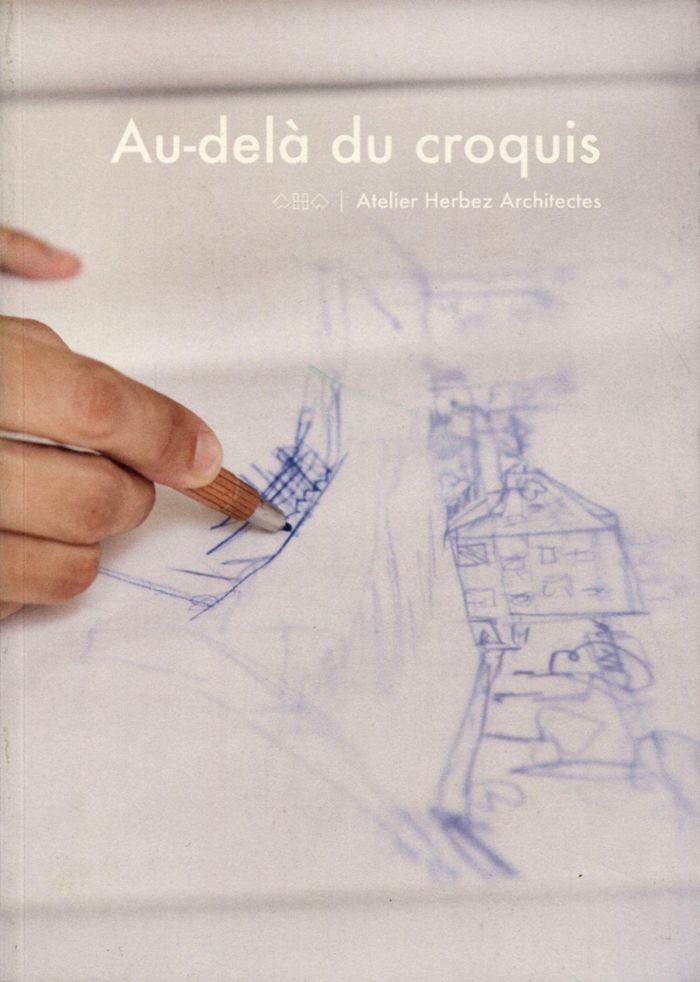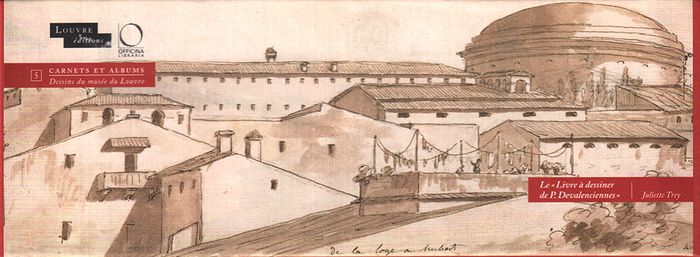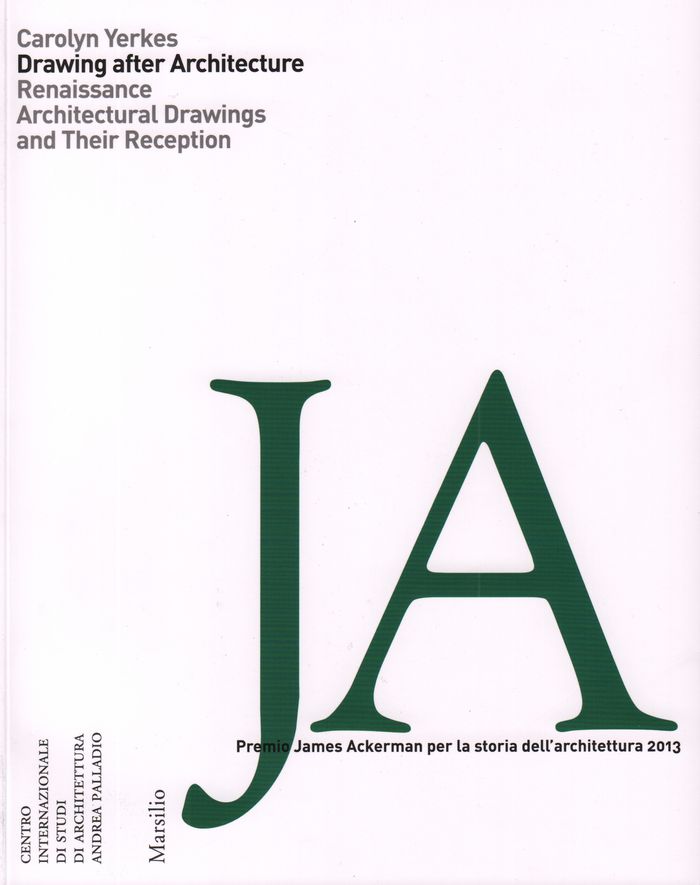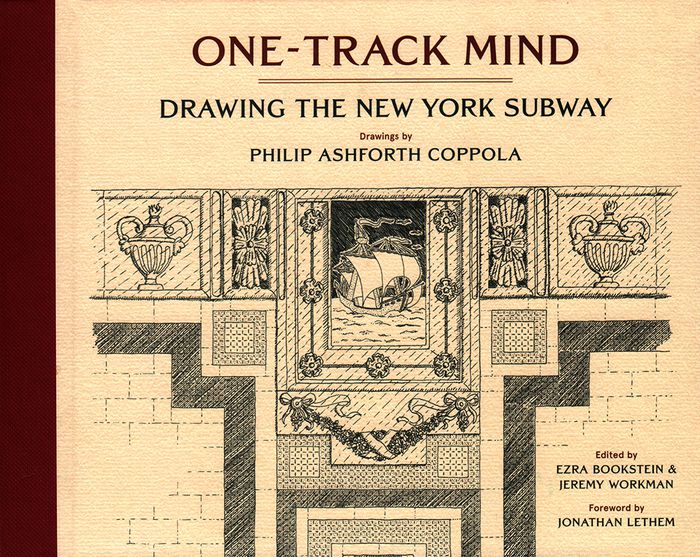$95.00
(available to order)
Summary:
This publication traces the use of color in European architectural drawings and prints, revealing how this phenomenon reflected the professional anxieties of an emerging professional practice that was simultaneously art and science. Traversing national borders, the book addresses color as a key player in the long history of rivalry and exchange between European traditions(...)
Inessential colours: architecture on paper in early modern Europe
Actions:
Price:
$95.00
(available to order)
Summary:
This publication traces the use of color in European architectural drawings and prints, revealing how this phenomenon reflected the professional anxieties of an emerging professional practice that was simultaneously art and science. Traversing national borders, the book addresses color as a key player in the long history of rivalry and exchange between European traditions in architectural representation and practice. Featuring a wealth of previously unpublished drawings, this book challenges the long-standing misreading of architectural drawings as illustrations rather than representations, pointing instead to their inherent qualities as independent objects whose beauty paved the way for the visual system architects use today.
Architectural Drawing
$36.95
(available to order)
Summary:
This exhibition catalog explores the remarkable theatrical designs of Italy’s influential Bibiena family in the seventeenth and eighteenth centuries. For nearly a century, members of three generations of the Bibiena family were the most highly sought theater designers in Europe. Their elaborate stage designs were used for operas, festivals, and courtly performances across(...)
Architectural Drawing
July 2021
Architecture, theater and fantasy: Bibena drawings from the Jules Fisher collection
Actions:
Price:
$36.95
(available to order)
Summary:
This exhibition catalog explores the remarkable theatrical designs of Italy’s influential Bibiena family in the seventeenth and eighteenth centuries. For nearly a century, members of three generations of the Bibiena family were the most highly sought theater designers in Europe. Their elaborate stage designs were used for operas, festivals, and courtly performances across Europe, from their native Italy to cities as far afield as Vienna, Prague, Stockholm, St. Petersburg, and Lisbon. Beyond these performances, the distinctive Bibiena style survives through their remarkable drawings. "Architecture, theater, and fantasy" commemorates a group of Bibiena drawings from the collection of Jules Fisher, the Tony Award–winning lighting designer, gifted to the Morgan Library and Museum in New York. Accompanying the first US exhibition of these works in more than thirty years, these drawings demonstrate the range of the Bibienas’ output, from energetic sketches to detailed watercolors. Representations of imagined palace interiors and lavish illusionistic architecture illuminate the visual splendor of the Baroque period.
Architectural Drawing
$22.95
(available to order)
Summary:
Florenski critique ici les fondements de la perspective et, avec eux, la conception classique de l’histoire de l’art, qui voit dans la Renaissance un acmé jamais égalé. Il analyse avec une grande finesse les icônes, qui génèrent une multitude de points de vue, au diapason avec la pensée qu’elles véhiculent. Daté de 1919, cet exposé est contemporain des recherches(...)
La Perspective inversée, n.é.
Actions:
Price:
$22.95
(available to order)
Summary:
Florenski critique ici les fondements de la perspective et, avec eux, la conception classique de l’histoire de l’art, qui voit dans la Renaissance un acmé jamais égalé. Il analyse avec une grande finesse les icônes, qui génèrent une multitude de points de vue, au diapason avec la pensée qu’elles véhiculent. Daté de 1919, cet exposé est contemporain des recherches plastiques de Malevitch. L’on tient là non seulement un texte précurseur de maintes recherches théoriques mais aussi un plaidoyer éminemment pédagogique en faveur d’un art ouvert à la vision subjective du spectateur.
Architectural Drawing
Au-delà du croquis
$36.95
(available to order)
Summary:
Qu'est-ce qu'un croquis d'architecture ? Il est commun de penser que les architectes dessinent leurs projets à partir d'un croquis fondateur, qu'ils imaginent les bâtiments instantanément en griffonnant sur un bout de papier quelques lignes les déterminant définitivement.En réalité, il semble difficile de résumer un projet à une sorte d'instantané précurseur isolé de(...)
Au-delà du croquis
Actions:
Price:
$36.95
(available to order)
Summary:
Qu'est-ce qu'un croquis d'architecture ? Il est commun de penser que les architectes dessinent leurs projets à partir d'un croquis fondateur, qu'ils imaginent les bâtiments instantanément en griffonnant sur un bout de papier quelques lignes les déterminant définitivement.En réalité, il semble difficile de résumer un projet à une sorte d'instantané précurseur isolé de toute autre recherche. L'architecte n'est pas un magicien et ne détient pas l'image finale de l'objet architectural dès la genèse du projet. C'est le croquis, dessiné par sa main et son esprit, qui peu à peu, grâce à son hyper-récurrence dans le processus de conception, va forger les lignes de force du bâtiment, de son volume général jusqu'aux moindres détails. En rassemblant une foule de croquis pluriels et bavards, cet ouvrage partage l'expérience de l'Atelier Herbez Architectes pour laquelle la pratique du dessin est une valeur forte, envisagée à la fois comme la base du travail de conception et comme un champ d'expérimentation insufflant la créativité. Aller au-delà du croquis c'est en explorer les mécanismes et en chercher les limites. Croquis à main levée, croquis informatiques et croquis du regard se mêlent ici pour révéler les ressorts du médium graphique qui trouve aujourd'hui, à l'ère du numérique, de nouvelles formes d'expression.
Architectural Drawing
$52.95
(available to order)
Summary:
The period between the 1950s and the 1970s saw the flourishing of a number of radical movements in architecture throughout Europe, producing a wide range of experimental expression. 'Cloud ’68' presents a selection of 173 graphic pieces—including lithographs, drawings, original etchings, and ephemera—that together give a sense of the diverse approaches that thrived in(...)
Architectural Drawing
October 2019
Cloud '68: Paper voice. Smiljan Radic's collection of radical architecture
Actions:
Price:
$52.95
(available to order)
Summary:
The period between the 1950s and the 1970s saw the flourishing of a number of radical movements in architecture throughout Europe, producing a wide range of experimental expression. 'Cloud ’68' presents a selection of 173 graphic pieces—including lithographs, drawings, original etchings, and ephemera—that together give a sense of the diverse approaches that thrived in those years. Drawing from the personal collection of the Chilean architect Smiljan Radic, the book features works by Constant, Guy Debord, Asger Jorn, Haus-Rucker-Co, Archigram, Utopie, Superstudio, and many others. Apart from essays by Tom McDonough and Lara Schrijver Cloud ’68 contains interview fragments by the critic and curator Hans Ulrich Obrist, who talked to the key figures of these movements.
Architectural Drawing
$74.00
(available to order)
Summary:
De Jacopo Bellini à Eugène Delacroix, six cents carnets d'artistes et albums de collectionneurs, conservés au musée du Louvre, permettent de mieux comprendre le processus créatif des maîtres qui les ont exécutés, et d'apprécier le goût des amateurs qui se sont attachés à les constituer. Ces oeuvres précieuses et fragiles demeurent pour la plupart méconnues. Certaines(...)
Livre a dessiner de Pierre Henri de Valenciennes
Actions:
Price:
$74.00
(available to order)
Summary:
De Jacopo Bellini à Eugène Delacroix, six cents carnets d'artistes et albums de collectionneurs, conservés au musée du Louvre, permettent de mieux comprendre le processus créatif des maîtres qui les ont exécutés, et d'apprécier le goût des amateurs qui se sont attachés à les constituer. Ces oeuvres précieuses et fragiles demeurent pour la plupart méconnues. Certaines d'entre elles, reproduites pour la première fois dans leurs dimensions d'origine et accompagnées d'une étude inédite, invitent désormais le public le plus large possible au plaisir de la découverte. "Après un séjour de quelques années à Rome, il faut revenir dans ses foyers... Mais il faut avoir bien employé son temps et fait une ample moisson d'études et de dessins pour s'en servir à propos, quand on est éloigné des pays dont l'aspect a électrisé notre âme et agrandi notre talent." Nul doute que le jeune peintre toulousain, Pierre Flenri de Valenciennes, employa bien son temps pendant son séjour italien, entre 1777 et 1785.
Architectural Drawing
$55.00
(available to order)
Summary:
Why did early modern architects continue copying drawings long after the invention of print should have made such copying obsolete? Carolyn Yerkes answers that question in a fresh investigation into the status of architectural drawing in the sixteenth and seventeenth centuries. Her book explores a vast network of manuscripts and drawings that each have information about(...)
Drawing after architecture: Renaissance architectural drawings and their reception
Actions:
Price:
$55.00
(available to order)
Summary:
Why did early modern architects continue copying drawings long after the invention of print should have made such copying obsolete? Carolyn Yerkes answers that question in a fresh investigation into the status of architectural drawing in the sixteenth and seventeenth centuries. Her book explores a vast network of manuscripts and drawings that each have information about ancient and modern buildings—including the Pantheon and Saint Peter’s—that is not known from any other sources. The drawings also show how the information was recorded, transferred, and analyzed by others. Yerkes examines the nature of architectural evidence to understand how Renaissance architects used images to explore structures, create biographies, and write history.
Architectural Drawing
$48.00
(available to order)
Summary:
Prior to the 1970s, buildings were commonly understood to be the goal of architectural practice; architectural drawings were seen simply as a means to an end. But, just as the boundaries of architecture itself were shifting at the end of the twentieth century, the perception of architectural drawings was also shifting; they began to be seen as autonomous objects outside(...)
Drawing on architecture: the object of lives, 1970-1990
Actions:
Price:
$48.00
(available to order)
Summary:
Prior to the 1970s, buildings were commonly understood to be the goal of architectural practice; architectural drawings were seen simply as a means to an end. But, just as the boundaries of architecture itself were shifting at the end of the twentieth century, the perception of architectural drawings was also shifting; they began to be seen as autonomous objects outside the process of building. In Drawing on Architecture, Jordan Kauffman offers an account of how architectural drawings—promoted by a network of galleries and collectors, exhibitions and events—emerged as aesthetic objects and ultimately attained status as important cultural and historical artifacts, and how this was both emblematic of changes in architecture and a catalyst for these changes.
Architectural Drawing
$34.95
(available to order)
Summary:
For decades, Philip Ashforth Coppola has meticulously documented the New York City subway in a series of extraordinary drawings, detailing the terracotta mosaics, faience, and tile patterns that millions of riders pass by every day. Coppola's drawings are what "Hyperallergic" calls "the most encyclopedic history of the art and architecture of the New York City subway(...)
One-track mind: drawing the New York subway
Actions:
Price:
$34.95
(available to order)
Summary:
For decades, Philip Ashforth Coppola has meticulously documented the New York City subway in a series of extraordinary drawings, detailing the terracotta mosaics, faience, and tile patterns that millions of riders pass by every day. Coppola's drawings are what "Hyperallergic" calls "the most encyclopedic history of the art and architecture of the New York City subway system." Along with Coppola's intricate ink drawings are anecdotes he assembled through painstaking research involving hundreds of hours poring through microfilms to discover the names behind the artisanship of what is rightly called New York's largest public art work---its legendary subway system. Philip Ashforth Coppola's drawings have been featured in the New York Times, "Hyperallergic", and on the BBC and are included in the New York Transit Museum's permanent collection. Foreword by Jonathan Lethem.
Architectural Drawing
$62.95
(available to order)
Summary:
''Regards dessinés sur le monde'' est plus qu'un simple recueil de dessins, c'est un voyage. Bernard Gachet, architecte globe-trotter, nous emmène sur les traces des civilisations passées aux travers des vestiges rencontrés de par le monde au cours de ses différents voyages réalisés depuis 1976. Bernard Gachet est un voyageur passionné, il parcourt le monde à la manière(...)
Regards dessinés sur le monde
Actions:
Price:
$62.95
(available to order)
Summary:
''Regards dessinés sur le monde'' est plus qu'un simple recueil de dessins, c'est un voyage. Bernard Gachet, architecte globe-trotter, nous emmène sur les traces des civilisations passées aux travers des vestiges rencontrés de par le monde au cours de ses différents voyages réalisés depuis 1976. Bernard Gachet est un voyageur passionné, il parcourt le monde à la manière des "amateurs" du XVIIIe siècle. Carnet et crayon à la main, il dessine et choisit pour nous ce que privilégie son oeil d'architecte : la diversité et la beauté des traces de l'histoire et des cultures. Comme pour mieux comprendre le monde. Le dessin se fait ici éloge de la lenteur et du passé, en plus d'être un fascinant moyen de connaissance et de découverte.
Architectural Drawing
